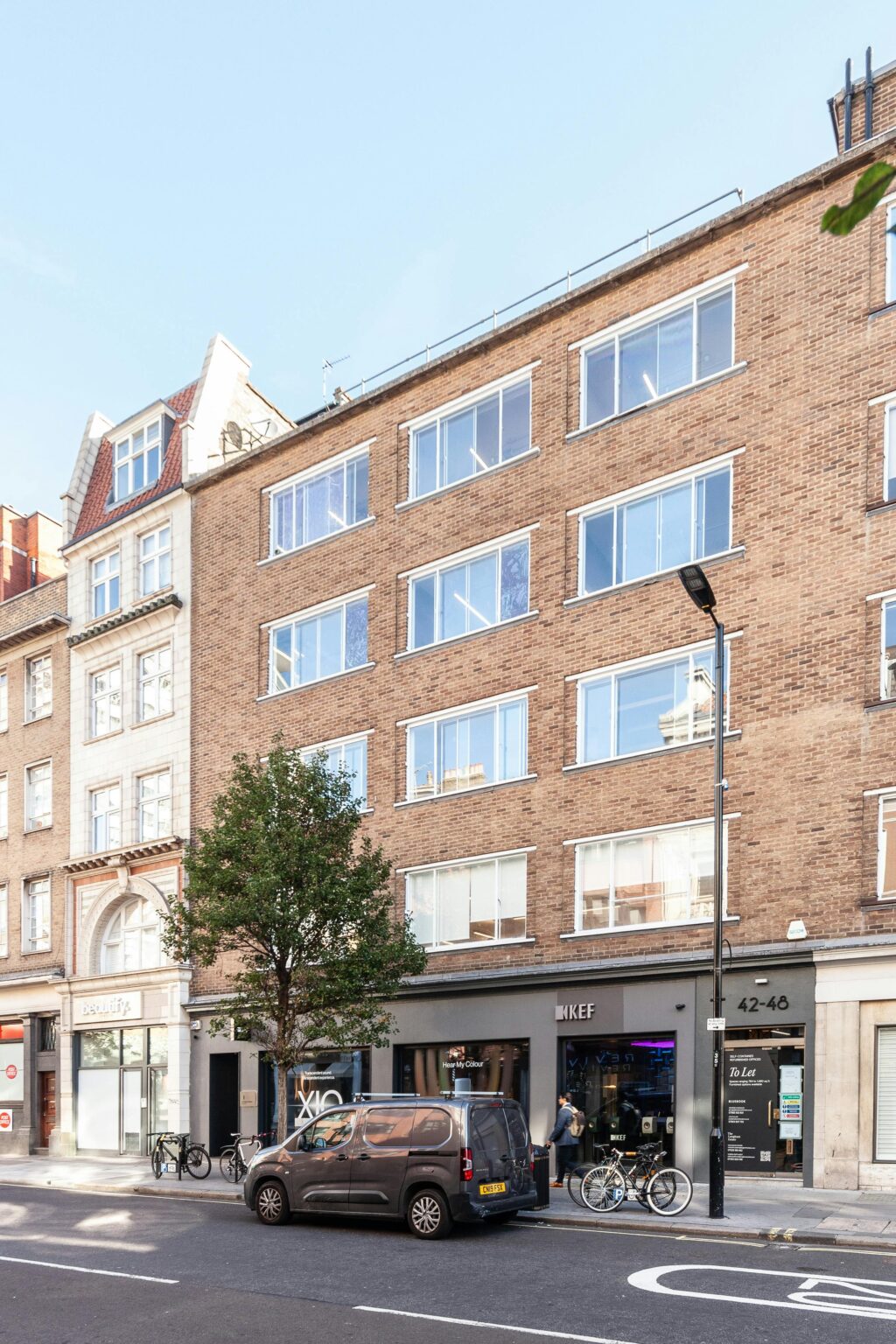London office market report 2025: Key insights and what to expect in 2026

The annual London office market report for 2025 gives a clear picture of a growing landscape. One that is slowly moving from recovery to a phase of strategic recalibration. While 2024 was marked by tentative optimism, 2025 has proved London to be one of Europe’s leading commercial property hubs. Therefore, as the city prepares for 2026, here are key office forecasts as well as investors’ and developers’ smart strategies designed to meet new occupier expectations.
2025 in review: London moves from recovery to recalibration
In 2025, London’s office market proved its resilience amidst shifting economic dynamics. The year showcased a decisive transition from post-pandemic rebound to a more measured demand recalibration. This growth is driven by evolving tenant priorities, tighter supply, and renewed investor confidence. Below are key market insights that describe the 2025 performance across major districts.
Flight to quality continues to reshape demand
The flight to quality remained the dominant trend of 2025. That is especially true as tenants continued to prioritise Grade A commercial properties that deliver measurable ESG value, employee wellbeing, and excellent connectivity. Businesses are also increasingly using their office spaces as strategic tools for talent attraction and brand representation.
Central locations like the West End and Fitzrovia have benefited from this trend, while outdated stock in fringe areas struggles to compete. This shift highlights that quality is what defines London’s office leasing market and not quantity.
Vacancy rates narrow in prime areas
Prime office markets continued to tighten through 2025. For instance, the report shows that the vacancy rate in the West End and Fitzrovia fell below 2%, demonstrating sustained occupier confidence in central London. Meanwhile, the city saw moderate stabilisation, with availability easing as occupiers recommitted to physical office strategies.
The contrast between submarkets reflects a broader structural change. For instance, tenants are clustering around well-connected, amenity-rich districts that align with ESG and wellness goals. The prime availability is also expected to remain constrained into 2026, especially as development pipelines thin and occupier preferences mature.

Investment sentiment strengthens
Investor confidence rebounded sharply in 2025. According to the London office market report, capital inflows during Q2 rose by over 30% quarter-on-quarter (1). West End once again led performance, attracting institutional and overseas investors drawn by resilient prime office yields and long-term rental stability.
Domestic purchasers continue to account for the largest percentage of turnover (39%), while interest from international investors rose by 17% YoY in 2025. London’s enduring status as a global financial hub drives this increased investors’ confidence.
Rents rise modestly but selectively
Rents in London’s commercial property market rose modestly in 2025, though growth was highly selective. Grade A offices in core submarkets reached record rental levels, driven by strong occupier competition and limited new supply. In contrast, older or non-compliant buildings saw rental softening, as tenants avoided properties lacking ESG credentials or modern amenities.
The divergence underscores a structural re-pricing of quality, where best-in-class properties outperform outdated stock. With ongoing retrofits and sustained occupier demand, the rent forecast for 2026 suggests continued upward pressure on premium spaces while secondary markets remain flat.

The 2026 outlook: From stabilisation to smart growth
Looking ahead, 2026 is expected to mark a new chapter of smart growth in London’s office market. Following 2025’s period of adjustment and recalibration, the coming year will be shaped by the following trends.
Supply dynamics: From completion peak to scarcity
After a decade-high completion cycle in 2025, new office deliveries are set to fall sharply. Only around 1.2 million sq ft of new space is forecast for completion in 2026, a 40% decline from 2025. This reduced pipeline will create renewed pressure on prime stock and drive a shortage in supply. For this reason, developers are shifting focus from speculative builds to targeted refurbishments and flexible pop-up leases (2). These create a more balanced yet competitive landscape.
Pre-letting intensifies
As 2025 closes, approximately 70% of 2026’s scheduled completions are already pre-let. This underscores continued occupier confidence in the London office market. High-performing submarkets, such as Fitzrovia and the West End, are seeing tenants commit early to secure high-quality, sustainable spaces before delivery. The trend suggests that flexibility and ESG alignment are becoming non-negotiable elements of modern office strategy.
Retrofit revolution accelerates
The fastest-growing subsector in 2026 will be ESG-driven retrofits. Landlords are investing heavily in energy-efficient upgrades, targeting carbon-neutral operations and WELL certifications. This retrofit revolution not only aligns with the UK’s Net Zero goals but also addresses occupier demand for sustainable, cost-effective workspaces. Retrofitted assets are also outperforming traditional refurbishments in both lease-up speed and prime office yields. This reflects the market’s pivot toward long-term value creation.
Market implications: Rising rents and heightened competition
With tightening supply and escalating ESG standards, rents for best-in-class space could rise another 3-5% YoY in 2026. Competition for premium offices will intensify, particularly among financial, medical, and technology occupiers seeking flagship addresses in Central London.
Meanwhile, landlords of outdated buildings face pressure to reposition or repurpose their assets to remain competitive. For investors, this evolution signals a move from broad-based recovery to strategic, quality-led growth across the London office market.


Partner with us for your next commercial opportunity
If you are looking to rent a retail space in London’s most dynamic Golden Triangle, The Langham Estate is the perfect place (3). Situated in the heart of Fitzrovia, our portfolio is home to some of the city’s most reputable names. These include:
- O2 Shop London: 142-144 Oxford St, London W1D 1LZ
- IKEA Oxford Street: 214 Oxford St, London W1C 1DA
- Space NK: 216 Oxford St, London W1C 1DA
If you are an established retailer or exploring pop-up leases to test a new concept, the estate offers flexible options to match your brand’s growth. Contact our team today for a comprehensive annual London office market report and a personalised guide on the best retail spaces in Fitzrovia.